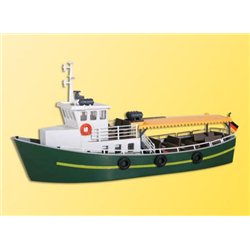Kadee couplings are a popular choice for railway modellers, particularly those modelling in HO and OO gauge....
No products
Product successfully added to your shopping cart
There are 0 items in your cart. There is 1 item in your cart.
Search Tips
Did British Railways ever operate ships?
British Railways owned and operated many ships from when it was formed in 1948 until 1984. British Railways inherited much of its fleet from the former railway companies it replaced and also commissioned several vessels during the years that followed.
In 1970, the brand name Sealink was introduced by British Rail to compete with other ferry operators and appeal to a growing passenger and freight market that didn't require through-travel utilising rail transport. During the operational years of Sealink, a proportion of their services were operated by French, Belgium and Dutch companies, all be it using vessels exhibiting Sealink's livery. British Rail owned vessels could be identified by their red funnels while other operators sported blue ones.
Sailings were operated to France, Belgium, the Netherlands, Ireland, the Isle of Man, Isle of Wight, Channel Islands and on Lake Windermere. In 1984, the British Government sold Sealink to Bermudan registered Sea Containers for £66 million.
Click here to receive the tips weekly in your mailbox. You can unsubscribe at any time.



.jpg)





